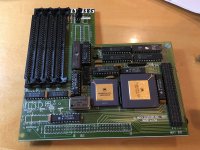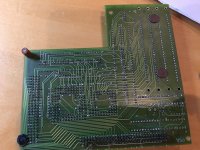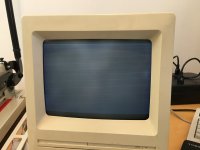Novy Systems were a popular manufacturer of accelerator cards, notable for the quality of their support software. The company was founded in late 1985, and the first product of note shipped in late 1987. Their last new products shipped in late 1993.
Compact Mac Accelerators
Novy launched the Mac 20 accelerator board for the SE, Plus and 512Ke in September 1987. It features an external oscillator that allows the owner to upgrade to a faster 68020 processor. 12, 16 and 24MHz versions are known to have shipped. The SE version uses the PDS slot while the Plus/512Ke version uses a Killy clip. Like competing products, a 68881 FPU is optional and the Mac 20 MX version has four SIMM slots to provide faster RAM access (max 4MB RAM). A control panel is required to provide software compatibility and a sound driver patch.
The same board was sold by Total Systems Integration as the TSI 020.
A 68030 accelerator was pre-announced shortly afterwards. It eventually shipped as the Mac 30 MX and Mac 30 MX-SE, running at 16MHz or 25MHz.
In 1990, the accelerator was reworked with new FPU, RAM and SCSI options and was renamed Novy Quik30. The next generation added support for external monitors and was called ImagePro. The 68030 ran as quickly as 33MHz. You will need very fast RAM SIMMs for an ImagePro to work reliably.
The relationship with Total Systems Integration continued, with Novy cards rebranded as Gemini 020 and Gemini 030. The Quik30 family cards were rebranded as the Railgun from MacProducts and as Digital DayStar cards. It is always worth experimenting with drivers from all companies to find the best solution.








